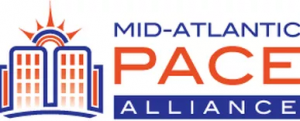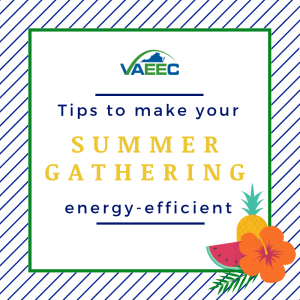 When looking to significantly reduce energy costs of a state facility, a state agency can enter into an energy performance-based contract with an energy performance contractor. This Energy Performance Contract, or EPC, is an agreement between a contractor or energy services company (ESCO) and a customer to meet a guaranteed level of energy savings as a condition of payment.
When looking to significantly reduce energy costs of a state facility, a state agency can enter into an energy performance-based contract with an energy performance contractor. This Energy Performance Contract, or EPC, is an agreement between a contractor or energy services company (ESCO) and a customer to meet a guaranteed level of energy savings as a condition of payment.
Energy Performance Contracting is generally equipment replacement that allows energy savings and installation of building control systems to control energy consumption, which is implemented by the Virginia Uniform Statewide Building Code. ESCOs provide all the labor, materials, equipment, and subcontractor management while often requiring little supervision. However, companies like DMME can serve as a trusted third party to state agencies and local governments who are considering entering into an EPC.
As an added incentive, EPCs offer customers guaranteed savings. If the ESCO does not meet the guaranteed savings, they must write a check for the difference and make needed changes at their cost. Additionally, Measurement and Verification data entered by an ESCO into DOE eProjectBuilder software are made available to end users.
Thomas Nicholas, a Facilities Engineer with the City of Virginia Beach Department of Public Works and VAEEC Board member, sees the opportunities that EPCs can offer a local government:
In the fall of 2018, using the Commonwealth of Virginia’s Energy Performance Contract, the City of Virginia Beach will be seeking solicitations from experienced Energy Service Companies (ESCOs) to complete energy retrofit work. Using the City’s capital improvement funding, we are seeking a whole building approach with an emphasis on LED lighting for approximately five City facilities. Our goal is to maximize energy savings, while at the same time meet the building occupants’ requirements.
This process of receiving an Energy Performance Contract has been relatively unchanged since 2001. However, now instead of only selecting four items from the list of ESCOs, state agency’s can invite all 15 pre-approved ESCOs to the “Back of the Envelope” (BOE). This change was created with the intent to start more competition and give the agencies and public bodies more choices.
Tim Bernadowski, a VAEEC member with Siemens, has only positive things to say about the revised EPC guidelines:
The newly revised Virginia ESCO pre-qualification and energy performance contract instructions provide a framework for Commonwealth agencies as well as other public entities, to help them simplify and speed the procurement of energy performance contract services and, as a result, the implementation of energy efficiency improvements. This is important, since energy performance contracting can appear to be a complicated and imposing process, even though it is one of the best ways to implement efficiency improvements both technically and financially.
The VAEEC supports the use of EPCs as a way for state-owned buildings and public institutions of higher education to replace aging equipment and become more energy efficient. Since 2001, state and local governments and institutions of public higher education have invested nearly $900M in Energy Performance Contracting, enabling them to save money that can be better utilized elsewhere. The VAEEC looks forward to seeing an increase in EPCs across the Commonwealth as more public agencies and institutions decide to opt-in.
Click here for a current list of Energy Service Companies and here for DMME’s Performance Contracting Support page. The new Request for Proposals for the Back of the Envelope can be viewed here.
Additionally, check out our Census report to see the VAEEC’s recommendation on EPC’s!
 At the Virginia Energy Efficiency Council, we strive to provide our members with a platform to connect and network with one another. With a wide diversity of skills and expertise, there is no telling all of the amazing things our members can conceptualize and achieve when they come together.
At the Virginia Energy Efficiency Council, we strive to provide our members with a platform to connect and network with one another. With a wide diversity of skills and expertise, there is no telling all of the amazing things our members can conceptualize and achieve when they come together.

One example of a great collaboration that has formed within the VAEEC community is between Community Housing Partners (CHP) and Old Dominion Electric Cooperative (ODEC). After initial conversations at our Spring 2017 Meeting, Chase Counts (CHP) connected ODEC with the state weatherization agency (DHCD), another VAEEC member, and other weatherization agencies, including fellow VAEEC-member project:Homes.
“It was a happy coincidence that I happened to sit next to Catherine Powers and Erin Puryear with ODEC at the VAEEC Spring 2017 Meeting. After getting to know one another, we decided to arrange a formal meeting soon after. We realized we had shared interests in providing their member’s services and we complemented each other’s capabilities. The conversations grew in scope to include other weatherization agencies in Virginia that provided services to several other ODEC member cooperatives. The VAEEC Spring Meeting definitely helped cultivate this partnership and catalyzed this pilot program,” Chase Counts told us.
As a result, ODEC is now working with CHP and projectHomes, as well as three other Virginia agencies, to conduct an income-based weatherization pilot with five of the ODEC distribution cooperatives. This program will expand in 2019 to include the broader Virginia footprint of cooperatives and agencies.
“ODEC has wanted to work with its cooperatives and member-owners for quite some time on a weatherization program, and with the introduction to DHCD through Chase, we are able to make it happen,” said Catherine Powers, VP of Forecasting and Member Services at ODEC.
So what are you waiting for? Click here to learn more about our membership program and all the great benefits that come along with it!
 By October 1st, the State Energy Office of the Department of Mines, Minerals and Energy (DMME) must prepare an Energy Plan that covers a 10 year period and submit that plan to the Governor, the SCC Commissioners and the General Assembly. This Energy Plan is required to propose actions that are consistent with the Commonwealth’s Energy Objectives (VA. Code 67-201) including projections of energy consumption, analysis of efficient use of energy resources and conservation initiatives, analysis of whether there is a disproportionate adverse impact on economically disadvantaged or minority communities, and recommendations for legislative, regulatory, and other public and private actions.
By October 1st, the State Energy Office of the Department of Mines, Minerals and Energy (DMME) must prepare an Energy Plan that covers a 10 year period and submit that plan to the Governor, the SCC Commissioners and the General Assembly. This Energy Plan is required to propose actions that are consistent with the Commonwealth’s Energy Objectives (VA. Code 67-201) including projections of energy consumption, analysis of efficient use of energy resources and conservation initiatives, analysis of whether there is a disproportionate adverse impact on economically disadvantaged or minority communities, and recommendations for legislative, regulatory, and other public and private actions.
This year’s plan, however, will have a slightly different focus. The DMME is pushing for a greater emphasis on outcomes and how this goal can be achieved through policy. In order for this plan to be the most effective and include the most input, DMME will rely on community involvement. Specifically, they want the public to help answer the following questions:
- What legislative changes are needed?
- What regulatory changes are needed?
- Is there administration level action needed?
- Is there private activity needed?
Slides from all meetings will be posted on this website and are open for public viewing. The public has until August 24th to submit comments online to the website.
In addition to the written comments, there will also be four listening session that the public can attend:
- July 23 from 1-4 PM House Room 1 of the Capitol in Richmond
- Solar Energy Development and Energy Storage Authority Meeting and Listening Session
- July 25 from 12-2 PM in Newport News
- Offshore Wind Energy Stakeholder Meeting and Listening Session
- July 30 from 5-7 PM in Roanoke
The Virginia Energy Plan will have five tracks and each will have their own focus areas:
- Solar and Wind Resources
- Energy Efficiency
- Electric Vehicles and Advanced Transportation
- Storage
- Offshore Wind
The four focus areas for energy efficiency are:
- Achieving Virginia’s 10% energy conservation target
- Lead by example strategies
- Financing
- Program design for DMME-funded programs.
The first kickoff meeting of three energy efficiency events was held on June 25th, which included a presentation by DMME on the final recommendations from the Governor’s Executive Committee on Energy efficiency (GEC) and the next steps. There was also an open discussion with the audience on additional topics for inclusion in the energy plan.
Below you will find the list of the completed tasks related to EE since the previous energy plan update:
- established the GEC
- enacted legislation facilitating Commercial Property Assessed Clean Energy (C-PACE)
- launched the VirginiaSaves program to provide additional financing mechanisms for efficiency programs (federal funding mechanism not reauthorized)
- developed a streamlined energy performance contracting program from Virginia facilities
- strengthened the Commonwealth’s building codes
DMME also presented these ongoing recommendations:
- Reach the voluntary goal of reducing energy consumption by 10 percent by 2020
- Reduce electricity consumption in state facilities by 15% through EPC by 2017
- Create central State facility energy data registry and dashboard to track energy consumption in State agencies
- Engage social entrepreneurs to explore and implement innovative models to aid ee
During the public discussion, the VAEEC commented that in order to achieve Virginia’s 10% energy conservation target, local government programs must be included and the $1.2B spending commitment by utilities in SB 966 has the potential to make a big impact on this goal. In addition, we also provided ideas for each of the other focus areas, including establishing a benchmarking program for all public buildings as a lead-by-example strategy, continuing to support the Mid-Atlantic PACE Alliance (MAPA) efforts to support localities interested in creating C-PACE financing programs, promoting the new Energy Performance Contracting guidelines and potential opportunities through the new Carbon Rule as ideas for program design for DMME-funded programs.
There will be two more meetings of the energy efficiency stakeholder group with discussions on specific focus areas:
- July 18th- achieving Virginia’s 10% energy conservation target and lead by example strategies. Localities are strongly encouraged to attend.
- August 1st- financing and program design for DMME-funded programs. Energy Service Companies and PACE advocates are strongly encouraged to attend.
Don’t miss on your opportunity to provide input on the Virginia Energy Plan. To learn more about the Virginia Energy Plan or to find details on meeting times and locations, please check the website.
 The much anticipated MAPA Regional Toolkit has been released!
The much anticipated MAPA Regional Toolkit has been released!
The Mid-Atlantic PACE Alliance, or MAPA, is comprised of state agencies, non-profit institutions, and private businesses working to accelerate the development and utilization of C-PACE in Virginia, Maryland, and DC. As part of their objective to accelerate the development and utilization of C-PACE programs within the tri-state area, MAPA developed a regional toolkit with feedback and input from C-PACE experts across the country.
The toolkit is a resource for stakeholders, including but not limited to local governments, program administrators, building owners, contractors, capital providers, and local lenders, providing best practices specific to this region. For localities, the provided guidance and resources streamline efforts to develop and launch a C-PACE program.

“[The toolkit] includes guidance on program development, financial underwriting, technical project criteria, sample program documents, and a model ordinance developed by the Virginia Energy Efficiency Council (VAEEC). This section also includes information on Arlington County’s C-PACE program, the first active C-PACE program in Virginia which launched in January 2018.”
With C-PACE still relatively new in Virginia, there is still a need for materials that will help stakeholders better understand the benefits of the program. Therefore, along with program guidance for interested localities, the toolkit also includes marketing information and resources. These materials help educate stakeholders in an effort to build support for and to promote C-PACE.
As many of you know, the VAEEC has been carrying out outreach and education to Virginia localities for just shy of two years now. We have encountered countless city and county staff and representatives who have been anticipating the release of this toolkit. With a section completely devoted to setting up a program in Virginia, we believe this toolkit will prove itself to be a vital resource to getting additional C-PACE programs up and running throughout the Commonwealth. We welcome the opportunity to meet with any stakeholder interested in C-PACE.
Contact Jessica Greene (jessica@vaeec.org) if you have any questions, or if you would like to schedule a meeting or call.

2016 VEEL Awards
Summer has begun, which means we’re gearing up for our annual Virginia Energy Efficiency Leadership (VEEL) Awards. Held in conjunction with the VAEEC Fall 2018 Meeting, the VEEL Awards Ceremony will be held on Wednesday, November 14th at the University of Richmond’s Jepson Alumni Center.
For the third year running, the awards highlight how energy efficiency champions across the Commonwealth are helping businesses, government, schools, and residents save money on energy bills while reducing energy consumption – all while stimulating Virginia’s job growth and economy. Projects or programs can be nominated for the following categories: Academic, Commercial, Government (local or state), Low-Income, and Residential. First, second, and third place will be awarded for each category.

2017 VEEL First Place Awards
The free online awards application process opens on Monday, July 9th and goes through Wednesday, October 3rd. Nominate an acquaintance, a colleague, a role model, or yourself! The only criteria are that the project or program is based in Virginia and is reducing energy consumption. Extra points are given for innovation and creativity, the degree of difficulty in overcoming challenges, and scope of work. Click here to view the Application Scorecard.
Still have questions? We have put together a Q+A guide to help you through the process. For a recap of our 2017 VEEL Awards, check out this blog post.
 ecoRemod: The Energy House at 608 Ridge Street is home to LEAP’s main office. Located in a historic neighborhood and owned by the City of Charlottesville, the neglected 1920s home was transformed into an innovative energy demonstration house in 2010 through funding by the City of Charlottesville, the University of Virginia, and generous sponsors.
ecoRemod: The Energy House at 608 Ridge Street is home to LEAP’s main office. Located in a historic neighborhood and owned by the City of Charlottesville, the neglected 1920s home was transformed into an innovative energy demonstration house in 2010 through funding by the City of Charlottesville, the University of Virginia, and generous sponsors.
Inspired by LEAP’s mission to facilitate energy efficiency and renewables for Charlottesville residents, this project allowed the City to take the lead in showing how residential energy efficiency can be achieved by preserving a historic home and attaining close to zero net energy use.

Truth window displaying the original laths and project sponsors
Lesley Fore, Executive Director of LEAP, said “LEAP has been so fortunate to work in a space that we can also use as a way to demonstrate the energy efficiency and renewable technology improvements that we recommend every day to home and business owners. ecoREMOD is a wonderful gathering place for school and community groups who want to learn more about what we do and how we do it. The truth windows and signage throughout the house really allow for a better understanding of energy efficiency, which is usually hidden behind walls.”
As a bonus, working in a 1920s house fits just with our organizational culture. We enjoy the homey-ness, the natural light, and the spaciousness. It’s a great work environment.” – Lesley Fore
This effort to show and create residential energy efficiency has not gone unnoticed. In 2013, the ecoRemod was awarded the US Green Building Council’s Leadership Energy and Environmental Design (LEED) Platinum certification, the highest rating possible, for achievement in green homebuilding and design.
See for yourself how energy and water improvements can be achieved in your home & visit the ecoRemond today! Email LEAP at info@leap-va.org or call at 434-227-4666 to set up an appointment or to schedule a tour for your school, neighborhood, office, or civic group.
VAEEC is honored to have both LEAP and the City of Charlottesville as longtime, active members. We look forward to continuing to work with them to advance energy efficiency across the Commonwealth.

Before remodel

After remodel

Airtightness display

Duct insulation to reduce energy loss

Airkrete exterior wall insulation
 Since the end of the General Assembly session back in March 2018, there have been quite a few updates on utility energy efficiency programs. Some of you may have attended our spring breakout session on utility programs.
Since the end of the General Assembly session back in March 2018, there have been quite a few updates on utility energy efficiency programs. Some of you may have attended our spring breakout session on utility programs.
VAEEC members can get a deeper dive into these updates by visiting our Member Resources page. From there, you can read all of our blog posts during the session, in case you missed them the first time and can scan a newly-updated presentation we created just for members.
If you have trouble accessing the Member Resources page, please contact our Program Coordinator, Jessica Greene Jessica@vaeec.org.
If you are not a member but would like to receive this same, in-depth information, we hope you will consider joining today.

VAEEC member Charlottesville is encouraging local businesses to participate in the Charlottesville Better Buisness Challenge, being offered this year by the Charlottesville Climate Collaborative. Started by a partnership with Better World Betty and LEAP (the Local Energy Alliance Program- a VAEEC Associate Member) in 2010, the Challenge has provided Charlottesville organizations with a way to participate in a friendly competition while cutting energy costs and leaving a positive impact on their community. From local schools and businesses such as Albemarle Baking Company to national, larger brands like Whole Foods and Plow and Hearth, the Better Business Challenge is fit to serve organizations of all sizes.
This Challenge is open to veterans of the green business game as well as people who may just be warming up to the idea. It provides an entry point to a fast-growing network of businesses who not only care about their bottom line but also their community impact. Last round’s 78 participants saved an average of $185,000 per year while taking 4,270 cars off the road, reducing CO2 by 1,823 tons!
So, why do businesses join? Business leaders across the nation have begun to realize that when you optimize energy use and transition to renewable energy, it just makes good business sense. For example, Plow and Hearth saved over $93,000/year in electricity bills with a lighting overhaul and Virginia Eagle Distributing saved $33,000 annually after instituting recycling and installing solar panels on tractor trailers.
The Challenge is easy and flexible to suit the busy schedule of companies and businesses. Every player is equipped with the tools necessary to cut costs and increase their bottom line. Participation grants access:
- to an Energy Scorecard with 46 action items to help reduce and improve energy use
- an Energy Catalyst Toolkit which is an easy-to-use digital toolkit to tailor the solution to your business needs
- catered “Lunch n’ Learns” that highlight key topics to stay ahead of the curve
- a challenge coach who works with your schedule to get things done, and
- an energy walkthrough to uncover further opportunities to save.
In addition, during the last Challenge, there were 35+ positive publicity outreaches to potential customers, members, and supporters. Participant businesses also received 850,000 local audiences “touches” through social media and other channels about their actions for becoming more green.
Any business, non-profit, or church located in Fluvanna, Louisa, Albemarle, Augusta, Nelson, and Greene County may register and participate in the Challenge. Click here to find out more about how to get started in the Better Business Challenge.
 Pool parties, cookouts, and other home gatherings will begin to pop up on your calendar as the weather rises into the summer. Whether it be for Father’s Day, a graduation party, Independence Day, or just a summer cookout, practicing energy-efficient steps can still help you save on your bills. Here are some tips on how to make your next gathering more energy-efficient:
Pool parties, cookouts, and other home gatherings will begin to pop up on your calendar as the weather rises into the summer. Whether it be for Father’s Day, a graduation party, Independence Day, or just a summer cookout, practicing energy-efficient steps can still help you save on your bills. Here are some tips on how to make your next gathering more energy-efficient:
Plan Ride-Share/Carpool Groups

Planning out carpools can save gas money for everyone involved. Have guests that live relatively close to one another either choose a designated driver or split a ride with businesses like Lyft or Uber.
Sharing rides cuts down on overall traffic on the road as well. Researchers at MIT developed an algorithm that found 3,000 sedans would be able to take care of almost all taxi demand in New York City, “with an average wait time of only 2.7 minutes.”
Use Fans to Cool the Room
Ceiling fans and portable fans are an easy way to keep cold air circulating in your room and save money on energy. While fans don’t actually cool the air, moving air evaporates moisture from the skin at a faster rate than normal, cooling the body. This is known as the wind-chill effect.
Using the AC in conjunction with the fan can save you money while maintaining the same level of comfort. Increasing the thermostat 2° F during the summer while using the fan to better circulate the air can result in a 15% reduction in air conditioning energy use.
Plan Parties for the Evening

Avoid the daytime heat surges by opting for an evening gathering instead. As temperatures cool, air conditioning won’t have to work as hard to reach your optimal setting. When weather permits it, you can open windows to cool the house and turn off the thermostat altogether and use the wind-chill effect from the breeze and/or fan.
Remember to turn off the air when you open the windows; many people forget to turn off the AC when the windows are open, which actually wastes more energy.
Plan Refreshments Efficiently

If you are planning to prepare food for your gathering, look into how you can save energy using alternative techniques.
- Use the correct eye size for the pot when you’re cooking on the stovetop. Using an 8-inch burner on a 6-inch pan wastes over 40% of heat energy to the air.
- Covering a pot when boiling water will cut the wait time, and energy use, in half.
- Instead of having guests constantly opening the refrigerator to grab drinks, pack them in a cooler or other container filled with ice. This will keep the internal temperature and humidity of the fridge consistent and prevent it from working overtime.
As mentioned at our Spring 2018 Meeting, the final Uniform Statewide Building Code (USBC) was published in the Virginia Register on April 30th. There is currently a 30-day public comment period open for any citizen who has concerns regarding these regulations.
If you have been following this process, then you will recall that VAEEC, in concert with our members and partners, was successfully able to work with home builders and code officials to include more energy efficiency measures in this new USBC update.

Initially, we anticipated the final regulations back in December with an effective date of July 1, 2018. Unfortunately, there was a major delay, which has now pushed the effective date to September 4th for the USBC and October 16th for the Fire Prevention Code. Earlier this week, we learned that this will most likely cause a delay for the next cycle update. It does not look like there is an appetite to start the next update cycle in 2019, as originally planned.
We will keep you posted as we learn more.
 When looking to significantly reduce energy costs of a state facility, a state agency can enter into an energy performance-based contract with an energy performance contractor. This Energy Performance Contract, or EPC, is an agreement between a contractor or energy services company (ESCO) and a customer to meet a guaranteed level of energy savings as a condition of payment.
When looking to significantly reduce energy costs of a state facility, a state agency can enter into an energy performance-based contract with an energy performance contractor. This Energy Performance Contract, or EPC, is an agreement between a contractor or energy services company (ESCO) and a customer to meet a guaranteed level of energy savings as a condition of payment. 
 At the Virginia Energy Efficiency Council, we strive to provide our
At the Virginia Energy Efficiency Council, we strive to provide our 
 By October 1st, the State Energy Office of the Department of Mines, Minerals and Energy (DMME) must prepare an Energy Plan that covers a 10 year period and submit that plan to the Governor, the SCC Commissioners and the General Assembly. This Energy Plan is required to propose actions that are consistent with the Commonwealth’s Energy Objectives (VA. Code 67-201) including projections of energy consumption, analysis of efficient use of energy resources and conservation initiatives, analysis of whether there is a disproportionate adverse impact on economically disadvantaged or minority communities, and recommendations for legislative, regulatory, and other public and private actions.
By October 1st, the State Energy Office of the Department of Mines, Minerals and Energy (DMME) must prepare an Energy Plan that covers a 10 year period and submit that plan to the Governor, the SCC Commissioners and the General Assembly. This Energy Plan is required to propose actions that are consistent with the Commonwealth’s Energy Objectives (VA. Code 67-201) including projections of energy consumption, analysis of efficient use of energy resources and conservation initiatives, analysis of whether there is a disproportionate adverse impact on economically disadvantaged or minority communities, and recommendations for legislative, regulatory, and other public and private actions. 










 Since the end of the General Assembly session back in March 2018, there have been quite a few updates on utility energy efficiency programs. Some of you may have attended our spring breakout session on
Since the end of the General Assembly session back in March 2018, there have been quite a few updates on utility energy efficiency programs. Some of you may have attended our spring breakout session on 
 Pool parties, cookouts, and other home gatherings will begin to pop up on your calendar as the weather rises into the summer. Whether it be for Father’s Day, a graduation party, Independence Day, or just a summer cookout, practicing energy-efficient steps can still help you save on your bills. Here are some tips on how to make your next gathering more energy-efficient:
Pool parties, cookouts, and other home gatherings will begin to pop up on your calendar as the weather rises into the summer. Whether it be for Father’s Day, a graduation party, Independence Day, or just a summer cookout, practicing energy-efficient steps can still help you save on your bills. Here are some tips on how to make your next gathering more energy-efficient:


